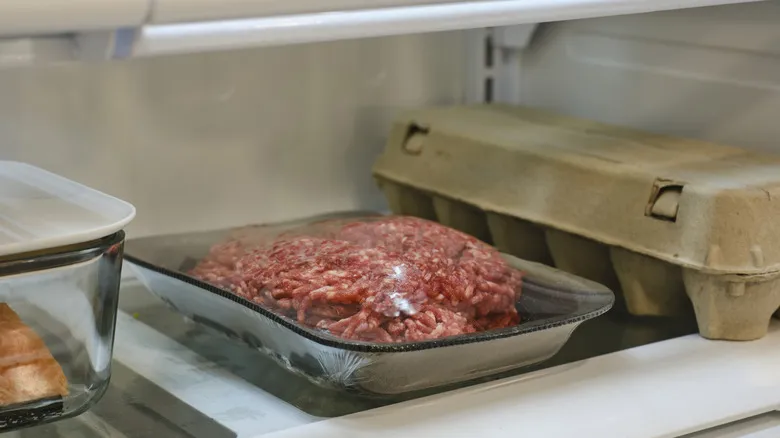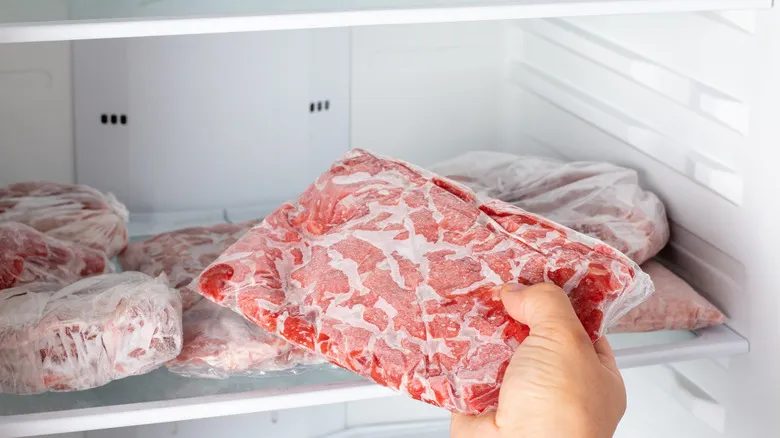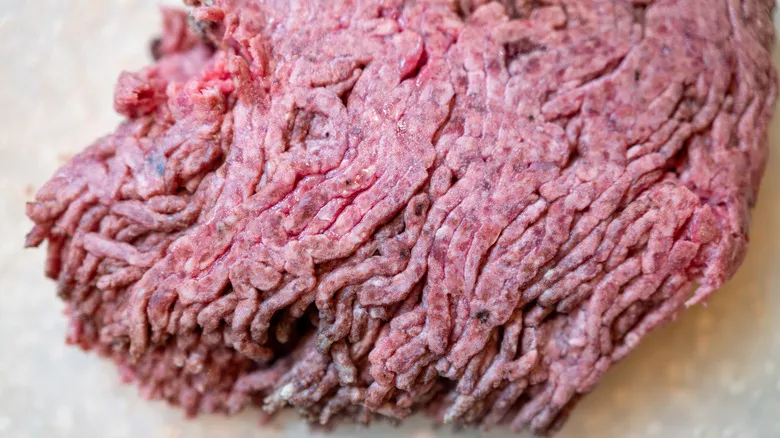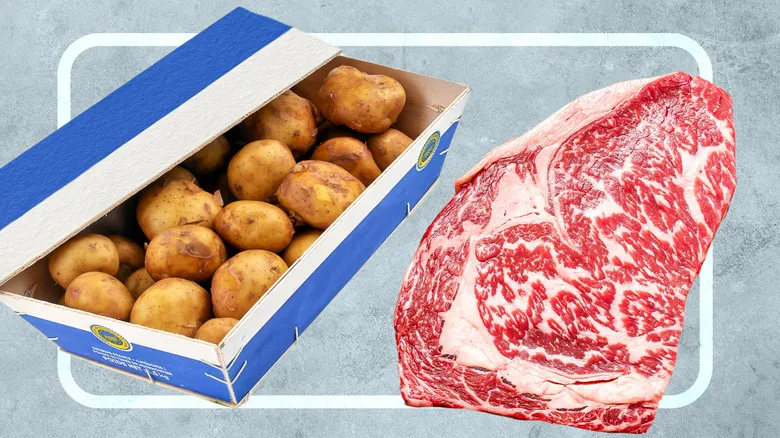Why the short shelf life of raw ground beef?

If you're surprised by the two-day refrigeration guideline for raw ground beef, we understand. In comparison to larger cuts of meat and steaks, which can be stored in the fridge for up to five days, two days feels quite brief. The reason ground beef spoils more quickly than standard cuts is that it has a greater likelihood of containing more bacteria due to its processing.
It's important to note that all types of meat (as well as every other food and item in our environment) can harbor bacteria. Food safety is maintained by striving to eliminate harmful microorganisms from our food or, at the very least, keeping their numbers low enough to prevent them from reaching infectious levels. Refrigeration plays a crucial role in this process, as temperatures at or below 40 degrees Fahrenheit slow bacterial growth significantly. The recommended refrigeration time for any food is designed to ensure that, even if harmful bacteria are present, they don't have enough time to multiply to dangerous levels that cooking alone may not eliminate.
In the case of ground beef, the potentially higher bacterial count is a result of the grinding process, which increases the surface area where microorganisms can attach. This means that the number of bacteria on ground meat can reach infectious levels more quickly than on a large steak, which has a smaller exposed surface area and, therefore, potentially fewer bacteria.
How to make ground beef last longer

Refrigeration, as we've noted, merely slows the spoilage process since a temperature of 40 degrees Fahrenheit still permits the growth and reproduction of microorganisms. To extend the shelf life of both raw and cooked ground meat, freezing is the best option.
At 0 degrees Fahrenheit, the standard temperature for freezers, both spoilage and illness-causing microorganisms become inactive, allowing your ground meat (and other foods) to remain safe in the freezer indefinitely. However, the quality may decline over time, which is why the USDA advises using ground beef within four months of freezing.
To ensure ground beef remains safely frozen, place the meat in a freezer bag with all the air squeezed out before sealing, or wrap it in aluminum foil and store it in a freezer-safe airtight container. When you're ready to use the meat, avoid the common mistake of cooking it directly from frozen. Instead, thaw it by transferring it to the refrigerator overnight. For quicker thawing, submerge the meat in cold water, changing the water every 30 minutes until fully thawed. You can also use a microwave in short intervals until the meat is completely thawed. After thawing, cook the raw ground meat to an internal temperature of 160 degrees Fahrenheit. For previously cooked ground beef that has been frozen, follow the same thawing method and then reheat it to 165 degrees Fahrenheit.
Signs that your ground beef is no longer safe to eat

Even with refrigeration or freezing, errors can occur, appliances may malfunction, and power outages can happen, potentially leaving your meat in suboptimal conditions, even if only for a few hours. This creates an opportunity for bacteria to proliferate quickly, resulting in spoilage. Therefore, it's crucial to consistently check for signs of spoilage in your ground beef to avoid consuming unsafe meat and risking illness.
Start by visually inspecting the meat. Fresh raw meat usually has a red exterior and a brownish-gray interior. This color difference is due to the interaction of oxygen with a protein called myoglobin, which forms oxymyoglobin, giving it a reddish hue. The inner portions of the meat are less exposed to oxygen, which is why they appear brownish. However, if your ground beef is uniformly gray or brown, both inside and out, it indicates spoilage, and you should discard it.
Another indicator of spoilage is a slimy texture. Fresh raw or cooked ground beef should feel firm to the touch. If the meat feels sticky, it is likely spoiled and should be thrown away. Additionally, any unpleasant or sour odor emanating from the ground beef is a clear sign of spoilage, and it should not be consumed. Finally, if you observe any mold on your raw or cooked ground beef, dispose of it immediately.
Recommended

Make Homemade Ice Cream In A Bag The Better Way With This Special Salt

This Rare Potato Variety Is More Expensive Than Wagyu Beef

Giada De Laurentiis' Secret Weapon For Boiling Pasta Is Italian Sea Water

Uncured Bacon Isn't Really Uncured. So What Is It?
Next up

